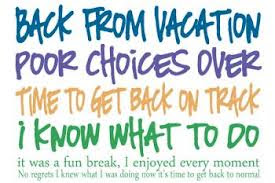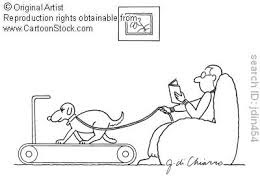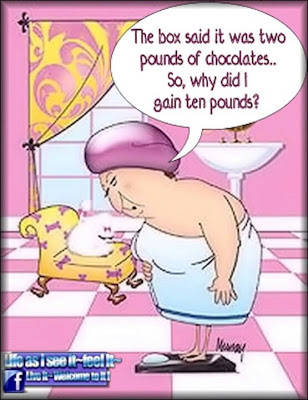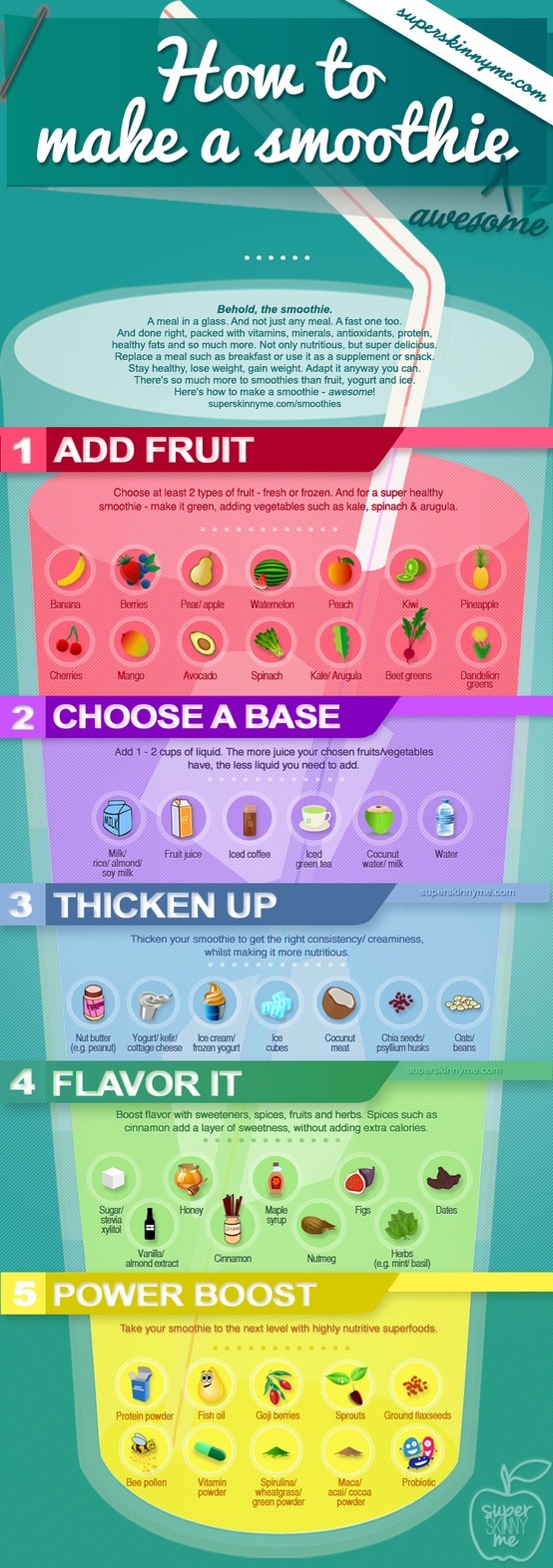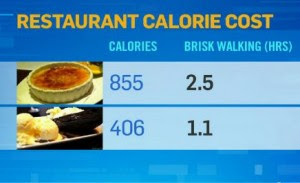Awww … really? Do I
have to?
Summer vacation (oh - who am I trying to kid … ANY
vacation) is notorious for derailing two things: your budget and your
diet! I am planning/saving/hoping
for a dream trip next year so there won’t a summer vacation trip for me this
year. That being said there will still
be the weekend invitations to one cottage or another, the barbeques and the hot
lazy days where I don’t feel like cooking.
Whether you are going on a vacation or having a stay-cation this year
it’s still difficult to maintain those healthy eating habits when the rest of
you is “taking it easy”.
There are basically two ways to approach the whole healthy
vacation dilemma.
1. You can make a
conscious decision to stick to your eating plan while you are on holiday (I
know it sounds impossible but there are people who manage to do just
that!). Or,
2. You can just
throw in the towel, put the diet on vacation too and accept the consequences on
the scale when you get back.
Neither choice is wrong, but if you decide to follow the
second course you need to accept that you may put on a few pounds. You may put on more than a few. Once in my younger, non-dieting days I
traveled overseas on my vacation to visit family. Now I don’t know what the deal is with European hosts, but food
is definitely a sign of hospitality and unconditional love. If you don’t eat they tend to feel a little
offended. Some cultures (yes, yes, you
know who you are) also lean a little more towards the bread and pasta than the
salad and protein. I ended up gaining
almost 12 pounds in 2 ½ weeks. Back
then it wasn’t so difficult to get it off.
Now, however, YIKES, that would set me for weeks. I find falling off
your diet is like getting behind on your bills … it takes twice as long to get
back on track than it did to derail in the first place. I guess what I am trying to say is that if
you choose to ignore calories while on vacation you MUST FORGIVE YOURSELF the
minute you get back, the minute you get on the plane or pack the car for the
return trip home. Get right back on
your program. If you are going to beat
yourself up, blame the world for the injustice of it all and never go back on
your sensible eating plan … then, may I suggest you make a conscious decision
to just eat sensibly while you are away.
It may be the lesser of two evils.
How do you stay on track while you are on vacation? I’m so glad you asked …
All of the experts and bloggers and nutritionists and diet
plans have different versions of “how to” when it comes to staying on your
eating plan for a healthy vacation.
When you look closely enough they also all have the main strategies in
common. So let’s cut to the chase and
look at those tips. Most of the items I
found (but not all) were also published in The Toronto Sun (June 23, 2013) and
are from Molly Morgan, a board certified sports specialist dietitian and author
of The Skinny Rules: The 101 Secrets
Every Skinny Girl Knows
1. Do your
homework. Research your destination
for nearby hiking trails, swimming pools, fitness centers, walking paths, bike
rentals and yoga classes. Staying
active on vacation can help you return without packing on a few pounds. Plus, it will get you out and about in the
area that you are visiting.
2. Pack your
exercise essentials. Don’t leave
home without stretchy bands and a yoga mat.
Then you can squeeze in a little extra exercise in you hotel room. There might be a rainy day or some time when your traveling companion is off doing something in which you do not want to participate. If you forget the yoga mat try a hotel towel
instead. Don’t forget about your
favourite workout clothes and sneakers.
3. Stick to a schedule. Easier
said than done since travel schedules often go awry. But be flexible and try to stick with at least three meals per
day and healthy snacks in-between. If
you know you are going out for a fancier dinner, make lunch a bit lighter. Skipping meals will wind up making you
hungrier for the next meal and less likely to stick to your eating game plan.
4. Get cooking. If
you can, try to arrange for accommodations that have a stove and a fridge. This is my least favourite tip. When I go on vacation I want to be on
vacation from EVERYTHING including planning and making meals. That said, even I have to admit that it does make a
lot of sense and as Ms. Morgan points out, sometimes the extra cost of the
accommodation is saved on not eating out for every meal and snack.
5. Get groceries. Among
the first stops you should make when arriving at your destination is the
grocery store. You can stock up on
dried fruit, nuts, peanut butter, whole whet bread, popcorn, bananas and
apples. If you have a refrigerator,
grab some berries, low fat milk and cereal and yogurt for simple breakfasts or
snacks. Having these foods on hand will
help keep your hunger in check and prevent overeating at mealtimes. Again, it is definitely budget savvy to have
breakfast, coffee and snacks (perhaps even lunch) in your room at least some of
the time.
Okay, so the planning is
done. Yup, you’re feeling pretty good
about the whole vacation/diet thing.
But the real test comes when you arrive at your destination.
6. Plan for restaurants. Restaurants
are notorious for large portions. Check
out the menu and nutrition facts before you order. Don’t be swayed by other’s choices. Stick to your own plan!
Skip sauces, ask for double vegetables, order a meal of all side dishes
such as sweet baked potato, broccoli and a side salad.
7. Eat fruits and veggies.
Challenge yourself to have a fruit and/or vegetable with every
meal. For example, berries at
breakfast, salad with lunch and double vegetables at dinner. And NO french fries do not
count!
8. Don’t drink your calories.
This may seem like a no-brainer, but especially around beaches and
hotels, fancy smoothies and soda seem to go hand-in-hand with sunbathing by the
pool. The sad fact is a strawberry
daiquiri contains around 250 calories.
Down two, and you’ve taken in as many calories as an average meal. If you want to indulge in the taste, many
establishments offer mocktails so you do not blow your calories on alcohol. You will save yourself from the calories and
sugar.
9. Pack your own snacks.
Ditch the bags of chips and high-sodium pretzels (not good for you … but
especially not good in the hot weather as the salt aids in dehydration). Pack your beach/pool bag with a filling trail
mix and fresh veggies. Celery and
carrots have a high water content, that will not only help you stay hydrated
but feeling full as well.
10. Stay hydrated! Stay
hydrated! Stay hydrated! Try to keep a reusable bottle of water
with you on vacation. When you are out
of your routine, sometimes water intake can quickly slip. Having a water bottle with you helps to keep
your water intake up while you are on the go.
Many amusements parks and popular tourist attractions offer free refills
for reusable water bottles. If you are
traveling to a destination where it is not safe to drink the water, stock up on
a case of water at the grocery store and avoid ice cubes in any of your drinks.
12. Give yourself a break.
You are on vacation! Excuses
to fail don’t cut it when you are in your day to day to day routine, but one or
two days off the perfect eating plan are not going to cause a major
setback. Eat well for two out of three
meals a day and let yourself indulge just a bit for the third meal. Treat yourself to a little decadence after a
long day, or split a dessert with one or two other people.
Just as I was about the hit the "publish" button I came across this video giving tips from a chef on how to navigate a buffet while on vacation (or even while you are not on vacation). It an be viewed at
Just as I was about the hit the "publish" button I came across this video giving tips from a chef on how to navigate a buffet while on vacation (or even while you are not on vacation). It an be viewed at
Enjoy your
vacation !
